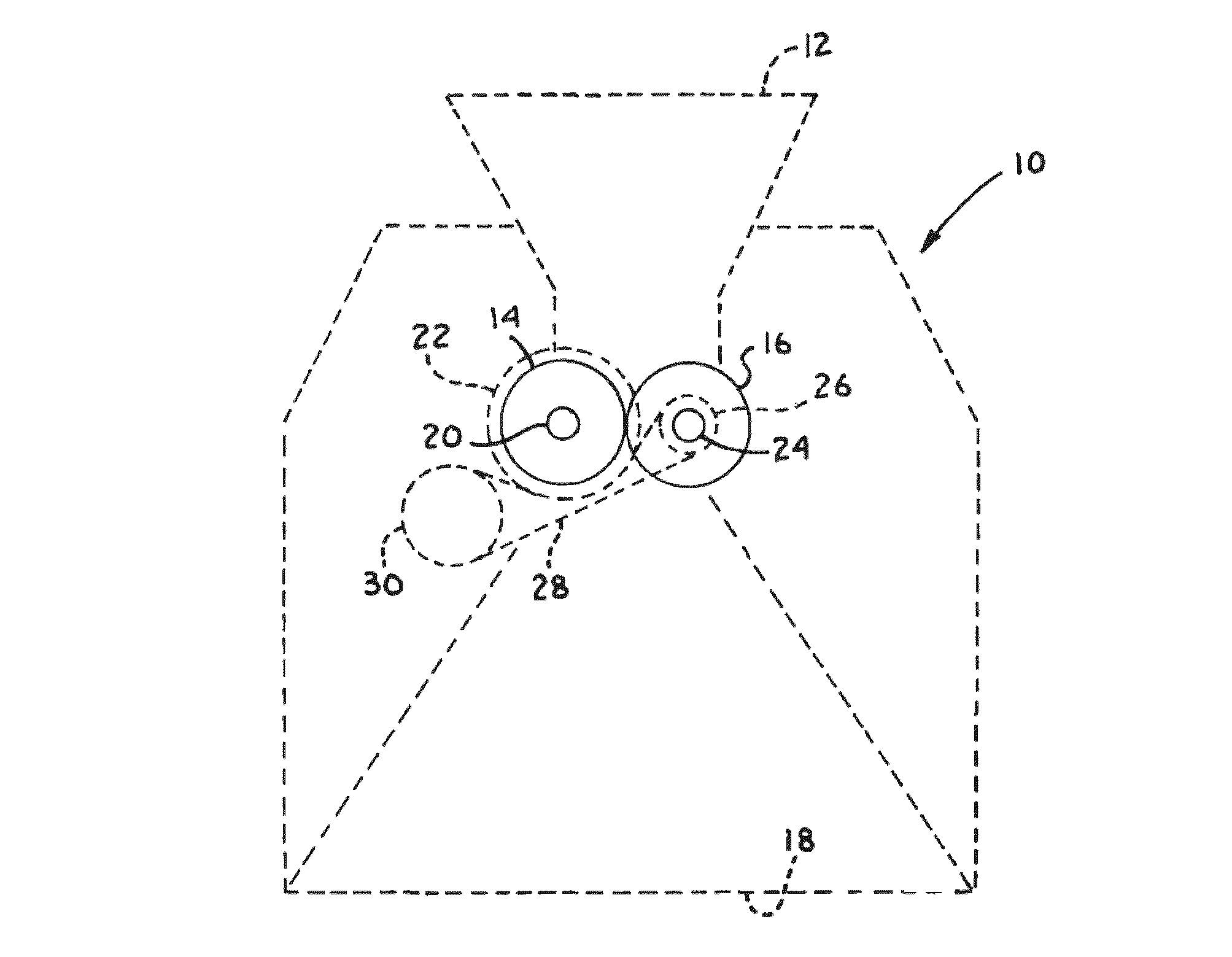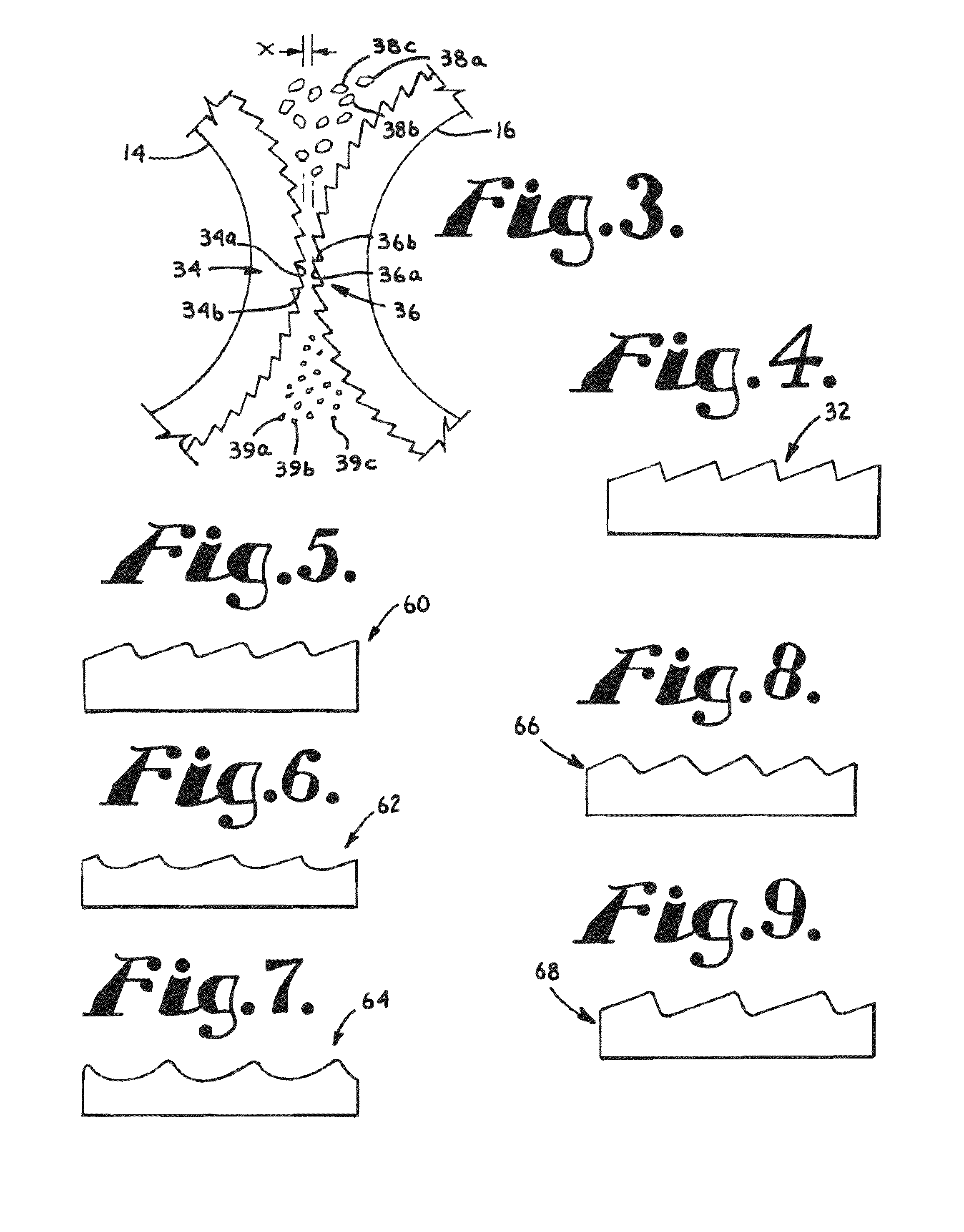Corn milling process
a corn milling and process technology, applied in cocoa, solid separation, agriculture, etc., can solve the problems of process not separating all recoverable germs, undesirable degradation of germ streams, etc., and achieve the effect of not reducing the size of germs
- Summary
- Abstract
- Description
- Claims
- Application Information
AI Technical Summary
Benefits of technology
Problems solved by technology
Method used
Image
Examples
Embodiment Construction
[0028]Referring to FIGS. 1-4, a differential roller mill for use with the corn milling process according to the present invention is shown generally as 10. As shown in FIG. 1, the roller mill has an input 12 which receives fractured corn kernels, a pair of counter-rotating rollers 14 and 16 positioned below the input 12 for separating the endosperm, germ, and bran portions of the fractured corn kernels, and an output 18 through which the separated particles pass. Roller 14 is mounted on a shaft 20 along with a pulley 22, and roller 16 is mounted on a shaft 24 along with a pulley 26. A drive belt 28 engages pulleys 22 and 24 and a drive pulley 30 which is coupled with a motor for rotating the pulleys. The belt 28 engages the pulleys 22 and 24 so that the pulleys rotate in opposite directions for effecting counter rotation of rollers 14 and 16. Additionally, pulley 22 is larger than pulley 24 so that roller 14 rotates at a slower rate than roller 16.
[0029]As shown in FIG. 2, each of t...
PUM
 Login to View More
Login to View More Abstract
Description
Claims
Application Information
 Login to View More
Login to View More - R&D
- Intellectual Property
- Life Sciences
- Materials
- Tech Scout
- Unparalleled Data Quality
- Higher Quality Content
- 60% Fewer Hallucinations
Browse by: Latest US Patents, China's latest patents, Technical Efficacy Thesaurus, Application Domain, Technology Topic, Popular Technical Reports.
© 2025 PatSnap. All rights reserved.Legal|Privacy policy|Modern Slavery Act Transparency Statement|Sitemap|About US| Contact US: help@patsnap.com



